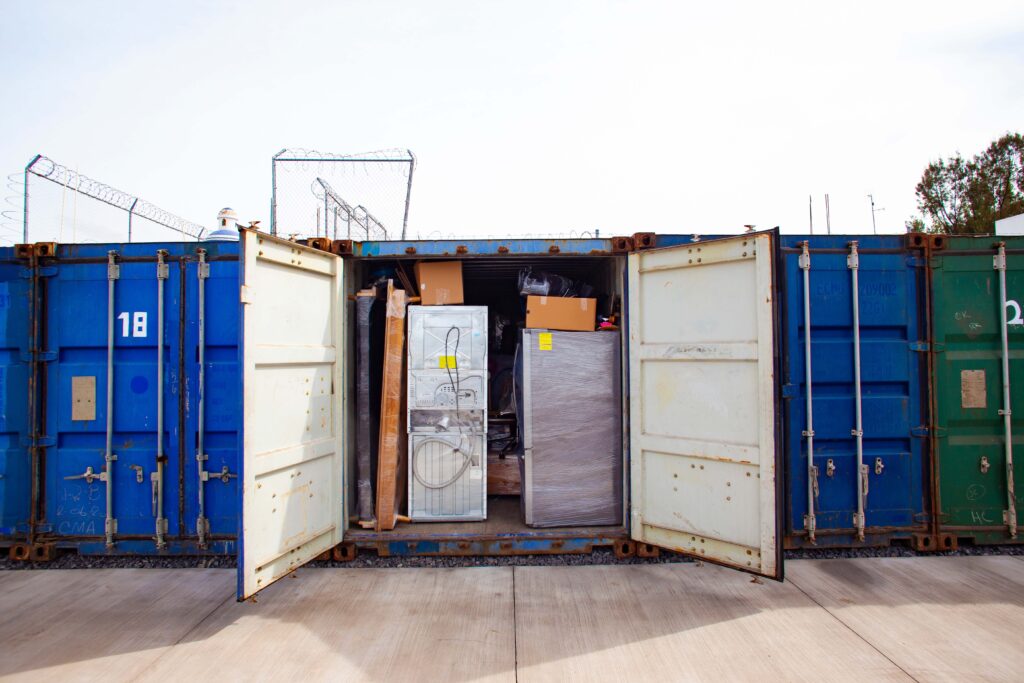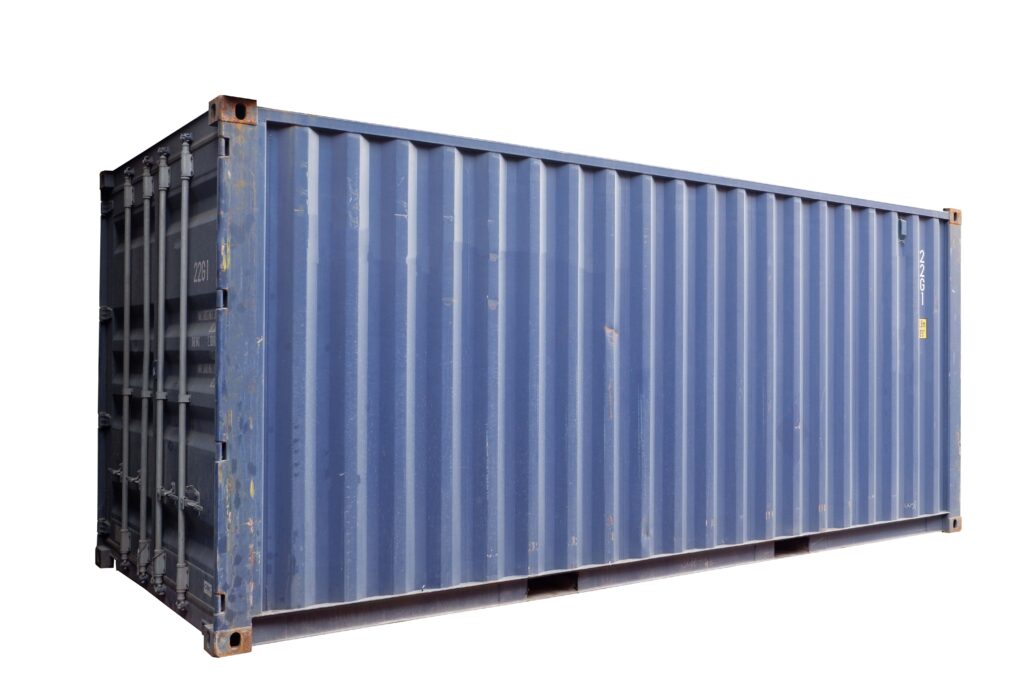Moving can often feel like a whirlwind of chaos and stress, but what if there was a way to simplify the process? Enter portable storage containers—your ultimate sidekick in making moves and temporary storage not just manageable but also hassle-free. Think about it: having a storage solution that shows up right at your doorstep, ready to help you organize your belongings without the usual rush or pressure. I’ve seen how they can transform seemingly overwhelming moves into smooth operations, letting you tackle packing at your own pace while keeping everything safe and secure. In this article, we’ll dive into the many benefits of these versatile containers and why they might be the perfect fit for your next endeavor.
Portable storage containers are flexible, transportable units that offer a convenient solution for moving and temporary storage needs. They can be delivered to your location for easy access while you pack or unpack, making them ideal for local or cross-country moves, renovations, or emergency situations.

Benefits of Portable Storage Containers
One of the most compelling advantages of portable storage containers is their convenience. Imagine knowing that you can have a container delivered directly to your home, ready for loading at your leisure. This saves time and effort, eliminating the need for several trips to a distant storage facility. You simply take your time packing and organizing your belongings while the container sits right outside your door. From my own experience, I’ve seen families transition smoothly because they had this flexibility, allowing them to unload without the pressure of deadlines.
However, convenience alone isn’t what makes portable storage containers exceptional; the security they provide is equally crucial.
Many people harbor concerns about leaving their belongings in transitional spaces. But with portable storage units, security features such as personal locks and heavy-duty materials ensure that your items are safe from theft or damage. In fact, according to a 2024 survey by Storage Magazine, an impressive 85% of users reported feeling confident in the security of their container-stored belongings. These containers aren’t just left out in the open; they can either stay on your property or be housed in secure facilities when not in use, allowing even greater peace of mind.
Beyond convenience and security lies another significant benefit: cost-effectiveness.
Renting a portable storage container is often more affordable compared to traditional moving services. You can potentially save up to 50% on costs with prices typically ranging from $100 to $300 per month depending on size and location. This means you can focus more on making your move seamless rather than worrying about breaking the bank. Moving becomes less about handing over large sums to movers and more about retaining control over your budget while effectively managing the logistics involved in relocating.
Finally, let’s examine how these containers offer unmatched flexibility during the moving process.
With portable storage containers, you have the luxury of deciding how long you need them on-site – whether it’s a few weeks or months. This flexibility allows you to unpack at your own pace without feeling rushed or pressured by strict timelines typical of conventional moving methods. Additionally, there are no penalties for changing rental terms or adjusting pickup schedules, which is remarkably refreshing compared to traditional storage solutions where timing inflexibilities could lead to frustrations or hefty fees.
With all these benefits in mind, understanding what specific features and characteristics to consider can further enhance your portable storage experience.
What to Look for in a Container
Not all portable storage containers are created equal. As you explore your options, paying attention to certain key features ensures you choose a unit that meets your moving or storage needs effectively. For instance, craftsmanship matters greatly; opting for containers constructed from durable materials protects your belongings from the elements and contributes to the container’s longevity.
Elements such as steel provide robust protection against weather conditions and potential theft. Steel containers can be on the heavier side, which may not be ideal for everyone, particularly if you’re planning a move across town. On the other hand, plastic containers offer a lighter alternative, making them easier to handle and transport. However, they may lack the same level of durability. Ultimately, it’s essential to weigh the pros and cons based on how long you need the container and what you’ll be storing inside.
Additionally, consider ventilation. A well-ventilated unit allows air circulation, significantly reducing the risk of mold and moisture buildup—especially important if you’re storing items like furniture or clothing for an extended period.
Think back to that old wooden dresser you inherited from Grandma; placing it in a damp environment could lead to unsightly mildew stains that require more effort to clean than it’s worth. Therefore, check for built-in ventilation holes or slatted designs that encourage airflow while keeping the contents safe from external elements.
Next on your checklist should be the locking mechanism—it’s vital for security. Not all locks are created equal; some are better than others at deterring thieves who might take advantage of unsecured containers.
High-quality locks and locking systems not only keep intruders out but also give you peace of mind while your belongings are stored away during a move or renovation. You want to ensure that you have full control over access to your items.
A final point worth considering is size. A one-size-fits-all approach doesn’t apply here; having multiple size options available can cater to various storage needs—whether you’re stowing away seasonal decorations or handling an entire household’s worth of moving boxes.
In fact, many companies offer standard sizes like 10 ft, 20 ft, and even larger 40 ft containers, allowing customers flexibility depending on their specific needs. Choose wisely; selecting too large a container can mean wasted space and unnecessary costs, while too small means limited space with no room for added items.
User reviews on forums often highlight the benefits of steel construction for long-term storage; reinforcing how valuable it is to make informed choices about your portable storage options.
Understanding these features will guide you toward making an informed decision as we continue to explore the variety of options available in terms of dimensions and styles.
Types and Sizes of Units
Portable storage containers are designed to cater to a variety of scenarios, making them flexible options for anyone in need of extra space. They come in several distinct types to suit different needs while providing effective and convenient solutions.
The most common type is the standard unit, which typically fits general storage demands, with sizes ranging from 8 feet to 20 feet. This versatility makes them suitable for everything from small apartment moves to larger residential transitions.
Standard Units
Standard units serve as the bread-and-butter of portable storage, easily accommodating around one and a half rooms’ worth of household items. For instance, a standard 8-foot container might be perfect for a college student’s dorm move or short-term storage during a home renovation. Meanwhile, a larger 20-foot unit can handle the entire contents of a three- or four-bedroom home. The flexibility of size allows customers to select just the right amount of space they require without overpaying for excess.
But what if your stored items require special care?
Climate-Controlled Units
When it comes to storing sensitive items like electronics, valuable artwork, or cherished heirlooms, climate-controlled units are the ideal solution. These specialized units provide precise control over temperature and humidity levels, ensuring that your belongings remain safe from extremes that could lead to damage. This protection becomes increasingly important when considering the potential impact of environmental factors on materials like wood or paper.
In fact, studies conducted by the Climate Storage Association reveal that items stored in climate-controlled units experience 70% fewer damage claims compared to those in non-climate-controlled settings. This compelling statistic highlights the importance of investing in specialized units when dealing with valuable or delicate possessions.
Beyond these two primary categories, other specialized units can greatly enhance your moving and storage experience.
Additional Specialized Containers
While standard and climate-controlled units often meet the majority of storage needs, there are also options like extra-large containers for significant moves or even mobile units that allow for on-site storage during construction projects. Knowing what’s available can help ensure you select the best unit tailored to your unique situation.
With an understanding of various portable storage options at your disposal, examining the financial aspects—whether renting or purchasing—is crucial for making an informed decision.
Cost Comparison: Renting vs. Buying
Renting a standard portable storage unit typically ranges from $100 to $300 per month, influenced by factors like size and location. This can be particularly appealing for those needing temporary space during transitions, such as moving or decluttering.
The flexibility that renting offers is one of its greatest advantages; you can easily scale your rental up or down depending on your circumstances. However, if you frequently find yourself in need of additional storage, these monthly fees can add up quickly over time.
On the other hand, purchasing a portable storage container involves a significant upfront investment. The cost for a similar unit could range from $3,000 to $5,000. Though this might sound daunting initially, it means you’ll have something tangible at the end of the day—an asset that you own outright.
Financial Breakdown
| Cost | Renting (Monthly) | Buying |
|---|---|---|
| Standard Unit | $100-$300 | $3,000-$5,000 |
| Climate-Controlled | $200-$500 | $5,000-$8,000 |
While renting appears cheaper in the short term, it’s essential to consider how often you’ll need that storage solution. If your plan involves ongoing use over multiple months or years, purchasing might provide better long-term value.
For example: if you rent for just one year at an average of $200 a month for a climate-controlled unit, you would spend around $2,400. Compare that to the purchase price of $5,000 for something that will last indefinitely.
Furthermore, owning a storage container allows for customization and modifications tailored to your specific needs. You won’t need to worry about terms and conditions imposed by rental agreements; everything from placement to insulation is entirely up to you. Many people have even turned their portable containers into workshops or mini-offices right in their backyards!
If you’re only seeking temporary relief from clutter during a move or renovation, renting is a smart choice. But if you envision ongoing needs even after your immediate situation resolves, investing in a portable storage unit could be beneficial.
Understanding the financial implications opens the door to exploring practical uses for these containers in everyday life.
Real-Life Use Cases

One significant application for portable storage containers is during home renovations. Picture this: a family in Seattle embarks on a long-anticipated kitchen remodel, filled with excitement and a little trepidation. To ensure the renovation goes off without a hitch, they decide to rent a portable storage container. This decision proves absolutely transformative. Instead of navigating around an unsightly jumble of furniture and appliances during construction, they store everything neatly outside. Their newfound organization keeps their home tidy, making it easier for contractors to access the work areas without risk of damage to personal belongings.
The ease of access provided by these containers significantly reduces stress for families tackling such projects. With the ability to quickly pack away everything from dining tables to kids’ toys, families can maintain a semblance of normalcy even within the chaos of renovation work.
Another compelling scenario involves emergency moves. Life can take unexpected turns — perhaps you receive a sudden job offer that requires relocation or your landlord decides to sell the property with little notice. I remember the time I faced a similar situation: I had just two weeks to move across the country due to an urgent career change. Renting a portable storage container was my saving grace; it allowed me the flexibility to pack leisurely at my own pace while storing everything securely until I could settle into my new home.
Such experiences highlight how renting a portable storage container can alleviate the anxiety often associated with last-minute moves while providing ample space for packing up all your essentials easily.
As more scenarios demonstrate the utility of portable storage solutions, it’s clear how they adapt to various needs. In exploring this further, we can draw insights into methods that enhance organization and efficiency within these spaces.
Tips for Maximizing Space

First and foremost, consider using uniform boxes. When all of your boxes are the same size, stacking becomes a breeze. This uniformity not only allows for neat vertical arrangement but also ensures that every nook and cranny of the container is utilized effectively. Think of it as playing a game of Tetris—fitting pieces of the same shape together creates stability and minimizes wasted areas.
Another invaluable tip is to disassemble larger furniture whenever possible. Take it from my experience: when I helped a friend with her move, we discovered just how much space we saved by breaking down the bed frame and table into flat components. By aligning these pieces against the walls of the container, we freed up valuable space for other items. Not to mention, disassembled furniture is less likely to sustain damage during transport.
Now imagine packing including soft items like blankets and linens. These can fill gaps between larger boxes or serve as cushioning material. This process does not only make use of every inch of the container, but it also protects your breakable items while in transit.
Keeping an inventory is another simple yet effective method. Create a detailed list of what you’re putting into your container to keep track of your belongings. This will save you time during unpacking, as you’ll quickly know where each item can be found without rummaging through multiple boxes, potentially disrupting everything else.
As you label your boxes clearly, this organized approach will allow you to maintain the structure throughout the entire move; it also provides peace of mind knowing exactly where you packed that seasonal decorative lamp or essential kitchen gadget.
By implementing these thoughtful strategies for packing your portable storage container, you’ll ensure that every square foot is utilized efficiently, making your moving experience smoother and hassle-free.
For more expert advice on maximizing your moving experience, visit ChooseTiger.
Incorporating these tips will not only enhance your efficiency but will also create a more enjoyable moving process overall. With careful planning and thoughtful packing, your next move can be stress-free and organized.



